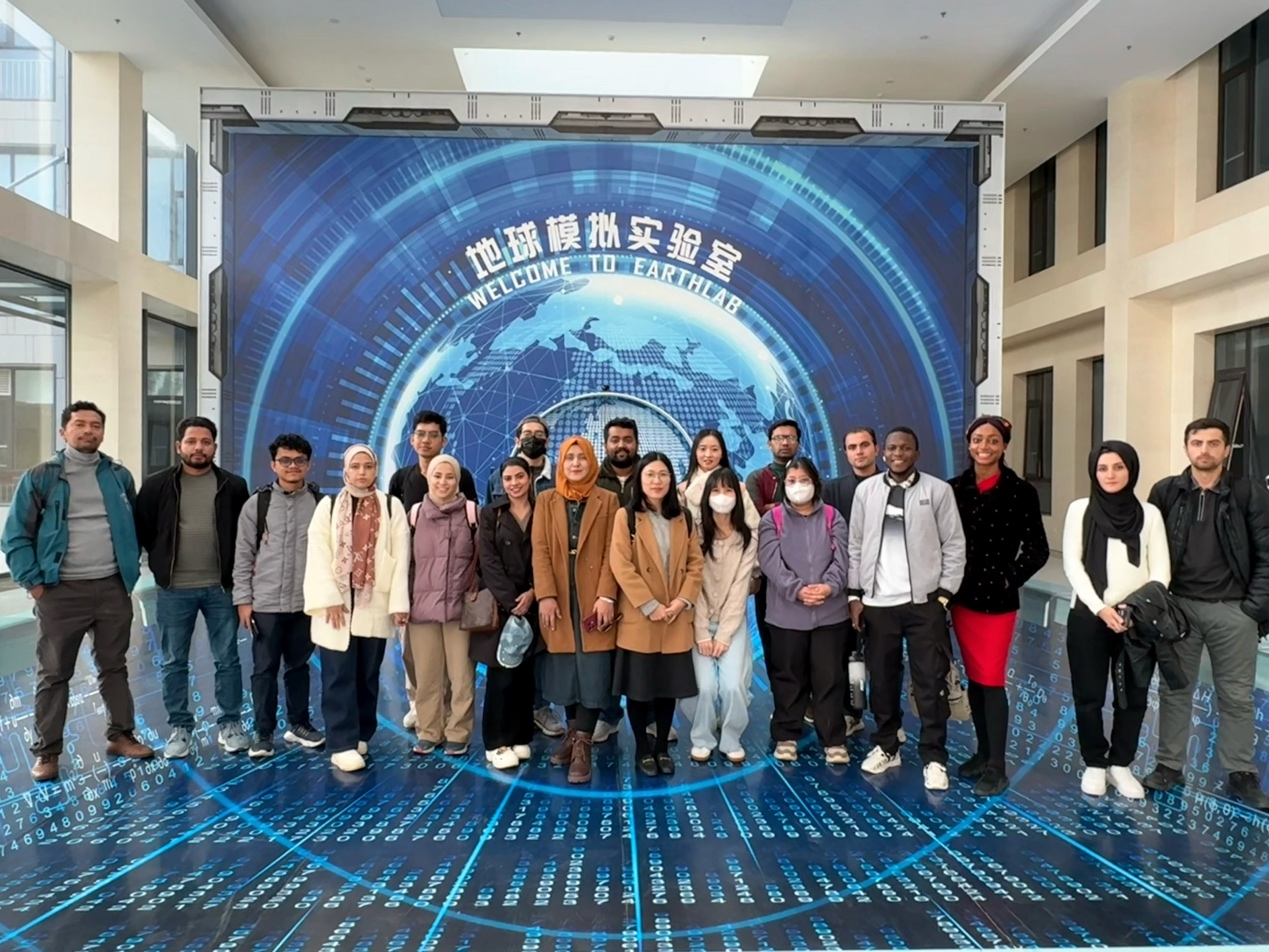On October 28, 2025, the "Global Environment Outlook" course of the International College, University of Chinese Academy of Sciences (UCAS), organized a visit for 19 international students to the National Major Science and Technology Infrastructure — the Earth System Numerical Simulation Facility (also known as “Huan”), located in Huairou Science City, Beijing. The visit was guided by lecturers from the Institute of Atmospheric Physics, Chinese Academy of Sciences, who provided in-depth explanations and visual demonstrations to help students better understand China’s latest scientific achievements and technological innovations in the field of Earth system science.
2025年10月28日,中国科学院大学国际学院《全球环境展望》课程组织19名国际学生前往北京怀柔科学城,参观国家重大科技基础设施“地球系统数值模拟装置”(简称“寰”)。本次活动由中国科学院大气物理研究所的授课教师带队讲解,通过系统的介绍与可视化展示,让国际学生深入了解我国在地球系统科学领域的最新科研进展与技术创新。
The "Earth System Numerical Simulation Facility" is China’s first independently developed large-scale infrastructure dedicated to Earth system modeling. Centered on a suite of integrated numerical simulation software for multiple components of the Earth system—including the atmosphere, ocean, land surface, cryosphere, and biosphere—the facility enables comprehensive simulation of their complex interactions. Equipped with a high-performance computing platform and advanced data visualization systems, it supports cutting-edge research in climate change prediction, extreme event simulation, environmental pollution tracing, and ecosystem response analysis. This facility marks a major milestone in advancing China’s Digital Earth initiative and strengthening the nation’s scientific capacity for global environmental governance.
“地球系统数值模拟装置”是我国首个具有完全自主知识产权的地球系统专用模拟装置,以地球系统各圈层数值模拟软件为核心,具备对大气、海洋、陆地、冰冻圈和生物圈等多圈层相互作用的综合模拟能力。装置集成了高性能计算平台与先进的数据可视化系统,能够支持气候变化预测、极端事件模拟、环境污染溯源与生态系统响应分析等前沿研究,是我国建设“数字地球”和提升全球环境治理科技支撑能力的重要里程碑。
During the visit, the students not only learned about the overall architecture and development of "Huan", but also experienced immersive 3D visualizations that vividly demonstrated how Earth system models simulate global climate and environmental changes.
参观过程中,学生们不仅了解了“寰”装置的总体架构和发展历程,也通过沉浸式的三维可视化展示,直观感受了地球系统模式对全球气候与环境变化的模拟成果。
This field trip was an integral part of the Global Environment Outlook course. Since the 1990s, the United Nations Environment Programme has launched the Global Environment Outlook report series, which provides a comprehensive assessment of environmental changes, driving forces, and policy responses at global and regional levels. Based on the sixth Global Environment Outlook report and its regional assessments, this course introduces the current state of the global environment, major drivers, changing trends, and future scenarios, with a focus on the latest progress and emerging directions in environmental governance and sustainable development. In the 2025–2026 academic year (fall semester), a total of 19 international students from 9 different countries enrolled in this course. After completing one year of intensive study at the International College, they will continue their research and academic training at various institutes of the Chinese Academy of Sciences and other schools of the University of Chinese Academy of Sciences (UCAS).
此次实地参观是《全球环境展望》课程的重要教学环节之一。联合国环境规划署自20世纪90年代起启动了全球环境展望系列报告的编制工作,对全球及区域层面的环境变化、驱动机制与政策响应进行了系统而全面的评估。基于这一系列报告成果,《全球环境展望》课程以第六次全球环境展望报告及其区域分报告为核心教材,系统讲授全球环境状态、主要驱动因子、变化趋势与未来发展情景,并重点探讨环境治理与可持续发展的最新进展和前沿方向。在2025—2026学年秋季学期,共有来自9个国家的19名国际学生选修本课程。他们在国际学院完成一年的集中教学后,将前往中国科学院各研究所及国科大校部学院继续科研学习。

授课老师介绍“地球系统数值模拟装置”的应用

《全球环境展望》课程实习合影



